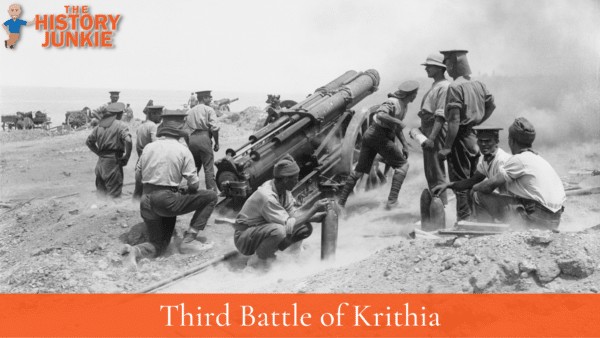Sir Ian Hamilton, the regional Commander-in-Chief, urged his local commander at Helles, Aylmer Hunter-Weston, to continue attacking the Turkish lines, which stretched many miles across the southern tip of the peninsula.

Hamilton wanted to maintain a policy of "ceaseless initiative," even though the Allies had only made modest progress during the Second Battle of Krithia in the first week of May 1915.
Jump to:
Prelude
Sir Ian Hamilton was still determined to capture Achi Baba, a prominent hill feature a mile behind the village of Krithia. Ever since the Allied landings on April 25, 1915, Hunter-Weston's forces had been under heavy fire from the Turkish troops stationed on Achi Baba.
Hunter-Weston believed that both Krithia and Achi Baba could be taken with more reinforcements. His boundless confidence, even though it was largely unfounded, gave his opinions more weight than usual with Hamilton and his staff at General Headquarters.
In early June, Hunter-Weston launched a series of four modest night advances in preparation for a third assault against Krithia. These advances resulted in the Allied line moving forward with little loss. In contrast, the single kilometer gained during the Second Battle of Krithia cost 6,000 casualties.
The period between the Second and Third Battles of Krithia was a particularly unpleasant time for the combined British and French forces at Helles.
Trench warfare was more deadly at Helles than on the Western Front, and the Turks had the upper hand. They sank two British battleships, Triumph and Majestic, reducing the effectiveness of the Allied naval presence.
On May 24, the British divisions at Helles were grouped together as VIII Corps, with Hunter-Weston as commander. Hamilton issued instructions limiting the aims of the next phase of the battle.
He had abandoned the idea of capturing Achi Baba in a single day and instead planned to seize the enemy's forward trench lines and use them as a base for further attacks.
The Battle
On a sunny, breezy June 4 at noon, the Battle of Krithia was renewed. The attack was led by Hunter-Weston and the newly arrived French commander Henri Gouraud.
Gouraud had a much better working relationship with the British than his predecessor, General d'Amade. During the battle, Gouraud was seriously injured, losing both legs and an arm. King George V sent a telegram of condolence to Hamilton.
The Allied attack began with an ineffective shrapnel bombardment from eighteen-pounder artillery. The 42nd (East Lancashire) Division made early gains on the British right, but the French on the extreme right struggled.
The attack was launched in two waves: the first wave was intended to capture the Turkish front line, and the second wave was to follow up and exploit any gains.
Within 90 minutes of the attack's commencement, the only effective progress had been made by the 42nd Division in the center. The Allied flank attacks had been repelled.
At this stage, Hunter-Weston and Gouraud agreed to commit reserve battalions to re-attempt the flank attacks rather than to exploit the 42nd Division's success in pushing to within a kilometer of Krithia village.
Despite the Allied attack, the Turkish defense, led by German officer Liman von Sanders, was able to repel the attack. The Allies suffered heavy casualties, with 6,500 additional casualties (4,500 British and 2,000 French). Turkish losses were estimated at between 9,000 and 10,000.
Some people in both the British and German camps argued that the British could have broken through the Turkish lines if they had been able to mount another attack on the following day. However, this was not possible, as the British had already suffered heavy casualties.
Over the next two days, the Turks launched heavy counter-attacks in an attempt to drive the Allied forces back into the sea. Hunter-Weston was hampered by the fact that many of his reserve battalions had already been used in support of the failed operations on June 4.
Despite this, the Allied forces eventually managed to repel the Turkish advance. Hunter-Weston was impressed by the way in which his Territorial force held their positions, which he said was even more impressive than their capture of the positions on June 4.
British War Minister Lord Kitchener was shocked by the number of casualties suffered in the latest attack. He promised Hamilton that he would send more reinforcements.
In the meantime, Hamilton abandoned operations at Helles and turned his attention to Anzac Cove.
